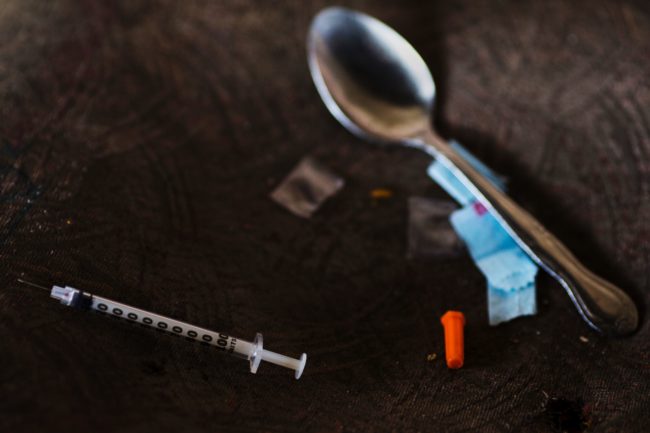LGBQ teens are more likely to use hard drugs – including heroin, than their straight peers

LGBQ teenagers are substantially more likely to use hard drugs compared to their heterosexual peers.
A study undertaken by San Diego State University and published in the American Journal of Public Health asked 15,624 high school students their sexual orientation and about their use of 15 substances including alcohol, drugs and tobacco.
The results found that LGBQ students were more likely to take a number of substances including alcohol, cigarettes, cigars, cocaine, ecstasy, vape, hallucinogens, heroin, inhalants, weed, meth, prescription drugs, steroids and synthetic marijuana.

LGBQ teens are more likely to use hard drugs such as heroin compared to their straight peers (DOMINICK REUTER/AFP/Getty)
Worryingly more LGBQ teens are at greater risk of using harder drugs, with 6.6 percent admitting to using heroin compared to 1.3 percent of young straight people, and 12.3 percent of LGBQs said they would use hallucinogens, while only 5.5 percent of straights said they would.
Other significant results included 8.6 percent of young LGBQ people saying they would try meth compared to 2.1 percent of heterosexuals and nearly 15 percent saying thing would use ecstasy and cocaine.
SDSU School of Public Health associate research professor and study co-author John W. Ayers said: “There have been some indications that LGBQ teens face increased substance use risks, but our study shows for the first time that the problem goes far beyond alcohol and tobacco, including the hardest most dangerous drugs,”
The team noted these new data should not be used to judge LGBQ teens.
Co-author Laramie Smith, a LGBQ health researcher at the University of California, San Diego said: “Our findings highlight the need for accepting LGBQ teens, as stigma may be playing a role in elevating their substance use risk or prevent those from needing help to speak up.”

Researchers have been emphatic that the teens should bit be judged (verkeorg / Flickr)
The Center for Disease Control and Prevention poll, which assessed risky behaviours among youth, found 39.5 percent of students polled had ever had sex, a fall from 47.8 percent in 2007.
In 2017, 9.7 percent of students had four or more sexual partners, down from 14.9 percent a decade ago.
However, a lower percentage of students who engage in sex reported using condoms. Only 53.8 percent of those polled said they had used a condom when they last had sex, compared to 61.5 percent in 2007.

